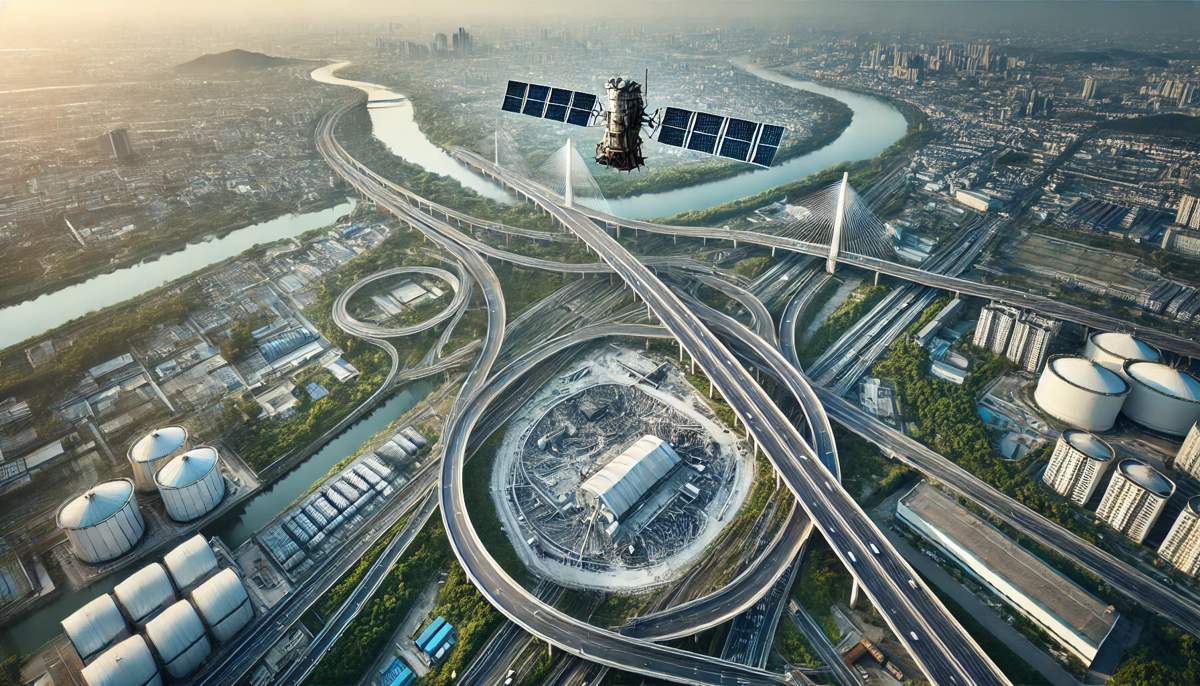Satellite Technology Creates a New Era for Sustainable Infrastructure Maintenance
As cities swell and populations concentrate in urban areas, the strain on infrastructure is becoming increasingly apparent. Ageing facilities, coupled with extreme weather conditions, pose daunting challenges for maintenance teams worldwide.
Landfill sites, roads, and subways—particularly in remote or difficult-to-access areas—demand innovative solutions to ensure functionality and prevent environmental hazards. Enter the Korea Institute of Civil Engineering and Building Technology (KICT), which is pioneering a revolutionary approach to infrastructure maintenance using data sourced from space.
KICT, led by President Sun Kyu Park, has developed a cutting-edge, cost-effective maintenance technology powered by satellite-based Synthetic Aperture Radar (SAR). This advancement has the potential to transform how we monitor and manage large-scale infrastructure, reducing costs and eliminating blind spots in oversight.
How Satellite SAR Technology Works
Satellite Synthetic Aperture Radar (SAR) offers a game-changing approach to wide-area surveys. Unlike traditional monitoring methods, SAR uses microwaves—ranging from a few centimetres to several tens of centimetres—to generate high-resolution images, even in adverse weather conditions. Its active remote sensing capabilities allow continuous observation, making it ideal for challenging environments.
Recent initiatives have leveraged free satellite SAR data, such as that provided by the European Space Agency’s Sentinel satellites. By integrating this freely available data into maintenance processes, KICT has created a solution that’s both cost-effective and efficient.
Dr. Sungpil Hwang and Dr. Wooseok Kim of KICT spearheaded research to analyse the impact of underground structures, such as roads and subways, on surface conditions. Their work includes assessing the effects of excavation and blasting, which can lead to surface subsidence. By verifying the technology across diverse structural conditions in urban areas, the team has demonstrated its potential for widespread monitoring of surface displacement.
From Landfills to Urban Areas
To test the technology’s applicability, a joint research team from KICT and the University of Tokyo conducted a field analysis on a waste landfill facility in 2024. Landfill sites, often vast and obstructed by trees, pose unique challenges for traditional maintenance approaches. To overcome these hurdles, researchers applied scatterers—artificial reflectors that enhance signal quality—to the site. The results were striking: data from scatterer-enhanced areas showed a signal strength more than 15dB higher than surrounding regions.
This breakthrough allows for more precise monitoring and significantly reduces maintenance costs—by as much as 30% compared to existing methods. Additionally, blind spots in management are virtually eliminated, ensuring a higher standard of environmental safety and operational efficiency.
Dr. Hwang, the lead researcher, highlighted the growing importance of such innovations. “The number of facilities requiring maintenance is increasing,” he said. “Using satellite SAR data enables cost-effective and efficient maintenance.” The team plans to implement this technology further, incorporating scatterers into a comprehensive maintenance system for landfill facilities.
A Broader Vision for Infrastructure
While the immediate focus has been on landfills, the potential applications for satellite SAR technology extend far beyond waste management. Urban infrastructure, including roads, bridges, and subways, could benefit immensely from such monitoring capabilities. By providing continuous and accurate data, SAR technology empowers engineers and policymakers to address issues proactively, preventing costly repairs and reducing risks to public safety.
Moreover, the scalability of this technology makes it particularly appealing. With global satellite networks expanding and SAR data becoming more accessible, the opportunity to implement these solutions across different sectors and geographies is immense. From tracking urban subsidence to monitoring rural infrastructure, the possibilities are nearly endless.
Pioneering Research with Global Impacts
This innovative project is part of KICT’s Research Programme (Project No. 20240401-001) and is funded by South Korea’s Ministry of Science and ICT. The findings were recently published in Sustainability, an esteemed international journal in the field of civil engineering, which boasts an impact factor of 3.3. These results underscore the global relevance of KICT’s work and its potential to address pressing infrastructure challenges.
With 42 years of research experience, KICT has established itself as a leader in solving national issues directly linked to quality of life. Its commitment to advancing technology, like satellite SAR, reflects a broader vision of integrating innovation into everyday infrastructure management.
Cost-Effective and Sustainable Maintenance
Looking to the future, KICT’s work represents a significant leap forward in how we maintain and monitor critical infrastructure. By utilising satellite data, this technology reduces costs, enhances precision, and mitigates risks associated with ageing facilities.
As Dr. Hwang aptly puts it: “Satellite SAR data isn’t just a tool—it’s a game-changer.” With its potential to transform maintenance across a variety of sectors, this technology marks the dawn of a new era in infrastructure management. The combination of cost efficiency, environmental sustainability, and technological innovation ensures its relevance for years to come.
By bridging the gap between space technology and everyday infrastructure, KICT is paving the way for smarter, safer, and more sustainable cities. This is more than just a step forward; it’s a giant leap for infrastructure management.




















